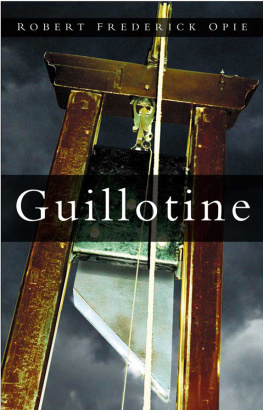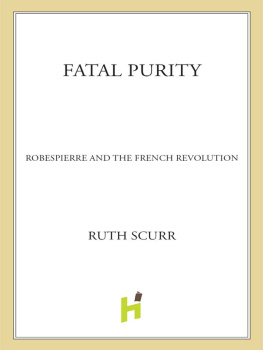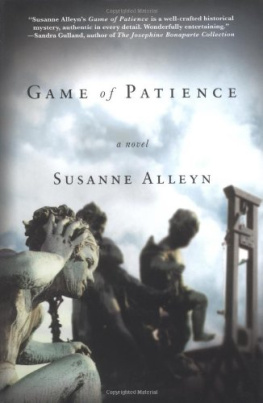Guillotine
The Timbers of Justice
To my wife Jean
and our children,
Jonathan, Laura, Drummond and Dawn
Guillotine
The Timbers of Justice
Robert Frederick Opie

First published in 2003
The History Press
The Mill, Brimscombe Port
Stroud, Gloucestershire, GL 5 2 QG
www.thehistorypress.co.uk
This ebook edition first published in 2013
All rights reserved
Robert Frederick Opie, 2003, 2013
The right of Robert Frederick Opie to be identified as the Author of this work has been asserted in accordance with the Copyrights, Designs and Patents Act 1988.
This ebook is copyright material and must not be copied, reproduced, transferred, distributed, leased, licensed or publicly performed or used in any way except as specifically permitted in writing by the publishers, as allowed under the terms and conditions under which it was purchased or as strictly permitted by applicable copyright law. Any unauthorised distribution or use of this text may be a direct infringement of the authors and publishers rights, and those responsible may be liable in law accordingly.
EPUB ISBN 978 0 7524 9605 4
Original typesetting by The History Press
Contents
Chronology
1738 | 28 May: birth of Joseph-Ignace Guillotin |
1757 | Franois Damiens executed |
1787 | 14 July: Dr Guillotin marries Marie-Louise Saugrain |
1789 | 24 January: Estates General formally summoned by the king |
4 May20 June: parliamentary convention to decide if it should vote as a single body or as separate factions |
17 June: the Third Estate (the people) adopts the new title of the National Assembly
20 June: the Assembly proclaims the Tennis Court Oath |
12 July: Tension and insurrection in Paris as Necker is dismissed |
14 July: The Bastille is stormed and falls to the mob
15 July: Necker is recalled to the Ministry of Finance |
26 August: Declaration of the Rights of Man
56 October: the market women march to Versailles |
9 October: reorganisation of the penal code |
2 November: the Church and its property are nationalised |
1790 | 13 February: monastic vows are outlawed |
1791 | 2 April: Mirabeau dies |
20 June: royal family flees to Varennes |
14 September: the king is forced to accept the new constitution |
1792 | 25 January: France and Austria are close to war |
10 March: Dumouriez joins the government |
3 March: Dr Louis devises the guillotine |
15 April: the guillotine is tested on corpses |
25 April: the appearance of the guillotine at the Place de Grve |
13 June: Prussia declares war on France |
20 June: Tuileries Palace attacked by the mob |
12 August: the Tuileries are stormed, and the Swiss guard killed |
10 August: the monarchy is overthrown |
26 September: September Massacres at the prisons |
21 September: Dumouriez clinches the Battle of Valmy |
22 September: France becomes a Republic |
1793 | 16 January: Louis XVI is sentenced to death |
21 January: the king is executed |
1 February: war declared on Britain |
March 1793June 1794: the reign of Terror, 1st phase |
2 June: the fall of the Girondins |
10 July: Marat is assassinated |
17 July: Charlotte Corday is guillotined |
27 July: Robespierre joins the Committee of Public Safety |
3 October: the Girondins sent for trial |
9 October: Revolutionary Government is declared |
16 October: Marie-Antoinette is guillotined |
31 October: the Girondins are guillotined |
8 November: Madame Roland is guillotined |
1794 | 24 March: Hbertists are guillotined |
5 April: Danton and Desmoulin are guillotined |
8 June: the Festival of the Supreme Being |
10 June27 July: reign of Terror, 2nd phase |
2728 July: fall and execution of Robespierre |
1795 | 6 May: Fouquier Tinville is guillotined |
1814 | Dr Guillotin dies |
Introduction
T his book explores the darker side of human inventiveness. It is a graphic and factual account of an implement of death which helped to create and dominate a culture that is uniquely French but of interest to all. Within these pages can be heard the echoes of the falling knife, levelling out a society and dealing with the criminal classes for the ultimate benefit of a new order. From its invention in revolutionary France until the last years of the twentieth century, this nightmarish machine has stood as the archetype of swift and merciful judicial death but was it so? The facts are more complex.
The guillotine was perhaps the most notorious and fearsome method of execution employed in modern times. The death sentence itself is an issue that continues to engage us. In the debate about justice and punishment the subject of judicial execution refuses to go away. This book is much more than a simple compilation of facts, weaving as it does a grotesquely interesting tale of a fearful implement used by society to oppress both the guilty and the innocent.
Guillotine, n. A machine which makes a Frenchman shrug his
shoulders, with good reason.
Ambrose Bierce, The Devils Dictionary, 1906
ONE
Death upon the Guillotine
F or Claude Buffet and Roger Bontemps the last seconds of 27 November 1972 ebbed all too quickly into the new day. Condemned to death and held in the prison of La Sant in Paris, they were the main protagonists in a macabre drama that was yet to play its final act. At daybreak on 28 November justice required them both to meet the Grand High Executioner of the Republic of France and the guillotine. Theirs would be the last executions by guillotine in Paris.
During a prison riot, Buffet and Bontemps attempted to escape from the Clairvaux prison. Buffet, already a convicted murderer, and his accomplice Roger Bontemps secured for themselves two hostages. Their bid for freedom was discovered but before they could be recaptured Buffet murdered both hostages, one of them a woman. Bontemps, now an accessory, found himself in the wrong place at the wrong time and with the wrong person. Though he had taken no part in the actual slayings, as Claude Buffets accomplice he too was found guilty of the capital crime and would face the same fate.

Peine de Mort Sentenced to Death. The Tribunals judgment on Buffet and Bontemps is spoken without emotion, remorse or regret; nor is it classed as some great judicial triumph of the Establishment. It simply marks the end of a trial where the punishment must be seen to fit the crime. This is how things are, or at least how they should be! It is a simple fact of life and of death that all judicial systems have minor flaws and all are flexible. Every crack can be explored and the system manipulated and twisted in any direction to save the lives of those condemned by it, but the lawyers must act expeditiously for there is no time for recriminations. An appeal against the sentence must be quickly formulated to defer their clients fate and their early morning meeting with the executioner and the Timbers of Justice.












